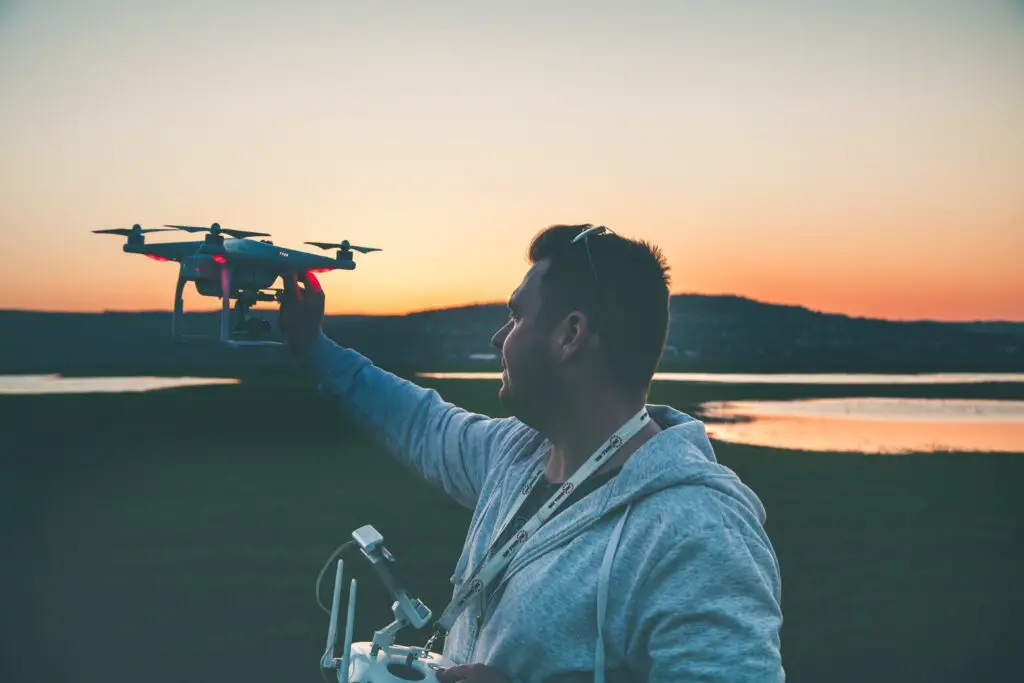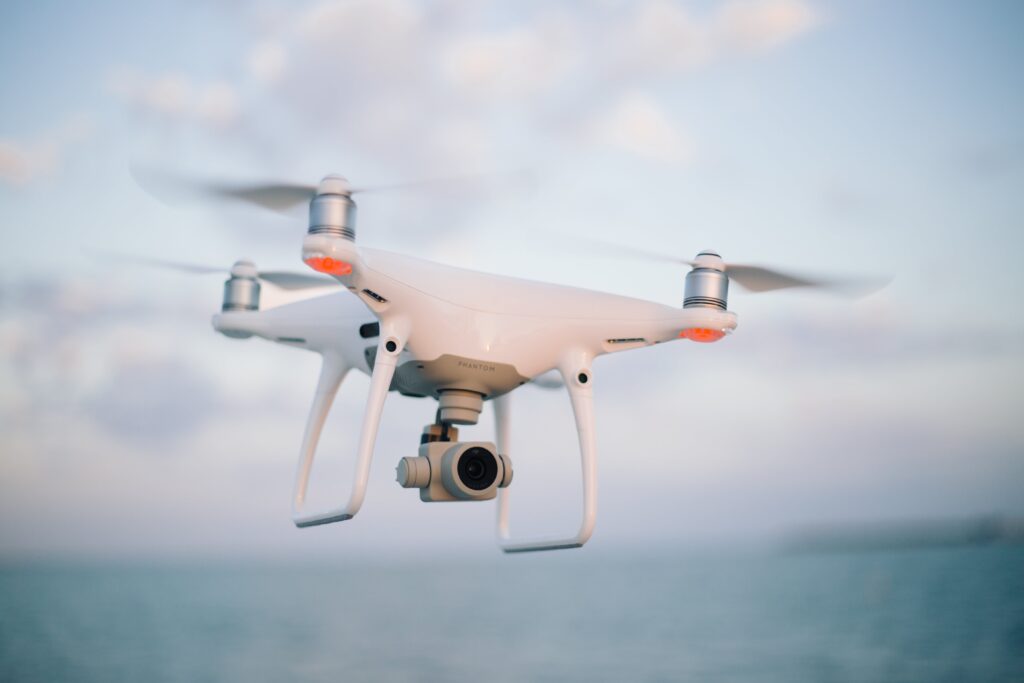Drones, commonly referred to as Unmanned Aerial Vehicles (UAVs), have ushered in a transformative era across diverse sectors, providing unmatched viewpoints from above. This in-depth analysis navigates through the primary attributes of drones, tracing their development, exploring practical applications, delving into technological progress, and illuminating the forthcoming trends that beckon us in the domain of drone technology.
1. The Evolution of Drones
Throughout the passage of time, drones have undergone a transformation, transitioning from basic remote-controlled aircraft to advanced and intelligent devices. Originally conceived for military use, drones have seamlessly assimilated into the civilian landscape, emerging as potent instruments with a myriad of applications.
2. Key Features of Drones Technology
Remote Controlled Precision
A distinctive attribute of drone technology lies in their precision under remote control. Operators can guide drones with exceptional accuracy, enabling them to reach challenging or hazardous locations with ease. This capability has transformed industries like surveying, where detailed aerial maps can be created efficiently.
Advanced Imaging Capabilities
Drones come equipped with state-of-the-art imaging technologies, encompassing high-resolution cameras and sensors. This capability has sparked a revolution in domains like aerial photography and videography, offering captivating visuals and perspectives that were previously unattainable or financially impractical.
Autonomous Navigation
Modern drones are not just remote-controlled; they boast autonomous navigation capabilities. Using GPS and other advanced technologies, drones can follow pre-programmed routes, making them ideal for tasks like surveillance, where consistent coverage is crucial.
Long Battery Life
The longevity of drone flights has seen significant improvement with advancements in battery technology. Drones can now stay airborne for extended periods, enhancing their efficiency in tasks such as search and rescue operations or large-scale aerial surveys.
Versatility in Applications
Drones are not limited to a single purpose; their versatility is a key selling point. From agriculture to environmental monitoring, drones have found applications in various sectors, showcasing their adaptability to different tasks and environments.
3. Real-world Applications
Aerial Photography and Videography
Drone Technology have transformed the landscape of visual storytelling. With the ability to capture breathtaking aerial shots, they have become indispensable in the film and photography industries, providing filmmakers and photographers with creative possibilities that were once unimaginable.
Search and Rescue Operations
In moments of pressing emergencies, the significance of time cannot be emphasized enough. Drone Technology, equipped with thermal imaging cameras and infrared sensors, have become essential tools in search and rescue operations, offering invaluable support and aid. Their contribution is pivotal, substantially diminishing response times and elevating the probability of locating individuals in distress.
Agriculture and Crop Monitoring
Precision agriculture has embraced drone technology for crop monitoring. Drones equipped with specialized sensors can assess crop health, identify areas of concern, and optimize the use of resources. This not only improves yield but also reduces environmental impact.
Infrastructure Inspection
The examination of infrastructure, such as bridges, power lines, and pipelines, poses inherent dangers and consumes considerable time. Drones, armed with high-resolution cameras and advanced sensors, excel in maneuvering through these structures effortlessly. This enables them to conduct meticulous assessments without exposing human inspectors to potential risks.
Environmental Monitoring
Drone Technology play a crucial role in environmental conservation. Drones have the capacity to observe wildlife, monitor shifts in ecosystems, and evaluate the consequences of human activities. The provision of real-time data proves instrumental in empowering researchers and conservationists to make well-informed decisions aimed at safeguarding our planet.
4. Advancements in Drone Technology
Artificial Intelligence Integration
The integration of artificial intelligence (AI) has propelled drone capabilities to new heights. AI enables drones technology to process vast amounts of data in real-time, making split-second decisions and enhancing their autonomy. This is particularly evident in applications like surveillance and security.
Swarm Technology
Swarm technology involves the coordination of multiple drones to work together seamlessly. This innovation opens up possibilities for large-scale operations, such as search missions or surveillance, where a collective effort is more efficient than individual drone deployments.
Improved Battery Technologies
Battery technology is a critical factor in drone performance. Recent advancements have led to lighter, more efficient batteries, extending flight times and overall mission capabilities. This is a game-changer in industries that rely on prolonged drone operations.
Regulatory Developments
As drone technology advances, regulations evolve to ensure safe and responsible usage. Regulatory bodies worldwide are adapting to the growing presence of drones in our skies, striking a balance between innovation and maintaining airspace security.


5. Pros and Cons of Drone Technology
Advantages of Drone Technology
Operational Efficiency
Drones exhibit the capability to execute tasks with swiftness and heightened efficiency, surpassing the effectiveness of conventional methods, thereby conserving time and resources.
Economic Viability
Employing drones often proves to be a more economically sound choice compared to deploying human resources or traditional aircraft in numerous scenarios, contributing to substantial cost-effectiveness.
Enhanced Safety
Drones excel in accessing perilous or challenging terrains, minimizing the potential risks to human lives, and ensuring a safer approach to various operations.
Ecological Influence
The integration of drones in agriculture and environmental monitoring fosters practices that are more ecologically sustainable, thereby positively impacting the environment.
Disadvantages of Drone Technology
Privacy Concerns
The ability of drones to capture detailed images raises privacy issues, requiring careful regulation.
Security Concerns
With the increasing prevalence of drones, there exists a possibility of misuse, presenting security risks that necessitate meticulous regulation to mitigate potential threats.
Payload Constraints
Despite notable progress, drones continue to grapple with limitations regarding the amount of payload they can bear, signifying that there are still challenges to be addressed in enhancing their carrying capacity.
6. Future Trends in Drone Technology
The future of drone technology holds exciting possibilities. From further integration with AI to the development of even more compact and powerful drones, the trajectory is towards increased capabilities and broader applications.
Conclusion
As we traverse the expansive realm of drone technology, it becomes apparent that the sky serves not as a limit but as a commencement point. Drones have surpassed their original military purposes, evolving into essential instruments across diverse industries. The fusion of exactitude, state-of-the-art imaging, self-governance, and flexibility has given rise to a technological marvel ready to reshape how we perceive and engage with the world around us.
Frequently Asked Questions (FAQs)
Q1. Is drone flight universally permitted?
Drone permissions vary globally, contingent upon the regulations of each country and region. It is imperative to stay informed and adhere to local laws before embarking on a drone flight. Always consult with relevant aviation authorities for the most current information.
Q2. Is it permissible to use drones for business purposes?
Absolutely, drones can serve commercial functions, though stringent regulations often apply. Many nations necessitate commercial drone operators to acquire certifications and conform to specific guidelines to ensure responsible and lawful operation.
Q3. What is the typical range of drone flights?
The distance a drone can cover hinges on its design and intended use. Consumer-grade drones typically boast a range of a few kilometers, while specialized models are engineered for longer-distance capabilities.
Q4. What precautions should one take when flying a drone?
When piloting a drone, adhere to designated flying areas, comply with local regulations, and maintain a safe distance from people, structures, and other aircraft. Regularly conducting maintenance checks on your drone is imperative to ensure safe and reliable operation.
Q5. Are drones utilized for surveillance purposes?
Indeed, drones find common application in surveillance across diverse sectors such as security, agriculture, and infrastructure inspection. However, it is vital to conscientiously address the ethical and legal implications associated with drone surveillance.

